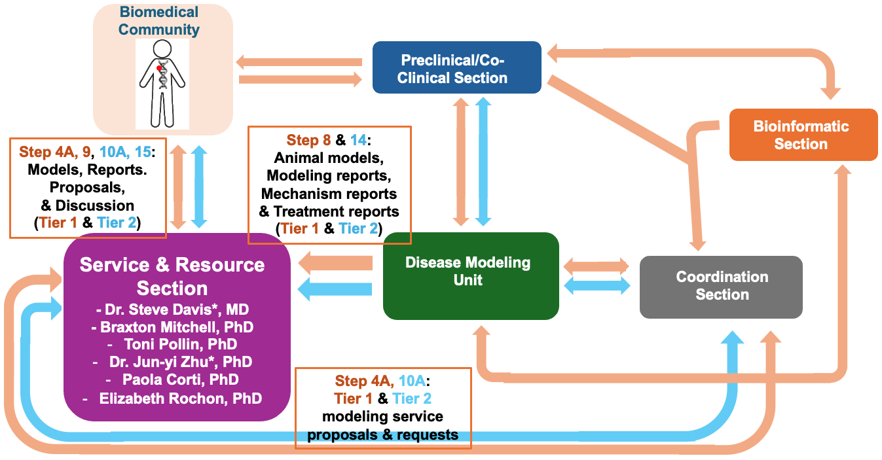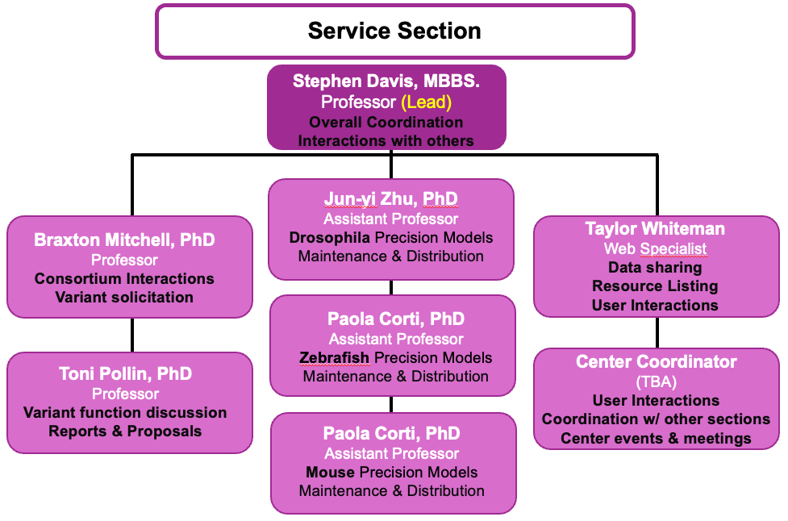Our Mission and Service:
The Service and Resource Section of CPDM@UMB serves as the Center’s primary portal for accessing the biorepository and utilizing CPDM’s offered services. We will facilitate requests for precision disease models, associated data, and unique services while providing expert guidance to clinicians and scientists on selecting and employing precision disease models in their research. Additionally, we will address all inquiries, ensuring effective communication between CPDM and the biomedical community.
Handling variant submissions: CPDM offers an evaluation of the feasibility of modeling the genetic disease variant in one or more of our platforms. We will provide a report with our recommendations (free-of-charge).
Bio- and Data Repository: The biorepository safeguards its carefully curated samples, their quality, and documentation.
Community relations: The Center organizes seminars and an annual symposium as a platform to disseminate research. We also offer internship opportunities (email us if you are interested - CPDM@som.umaryland.edu).
Interaction with the other center sections


